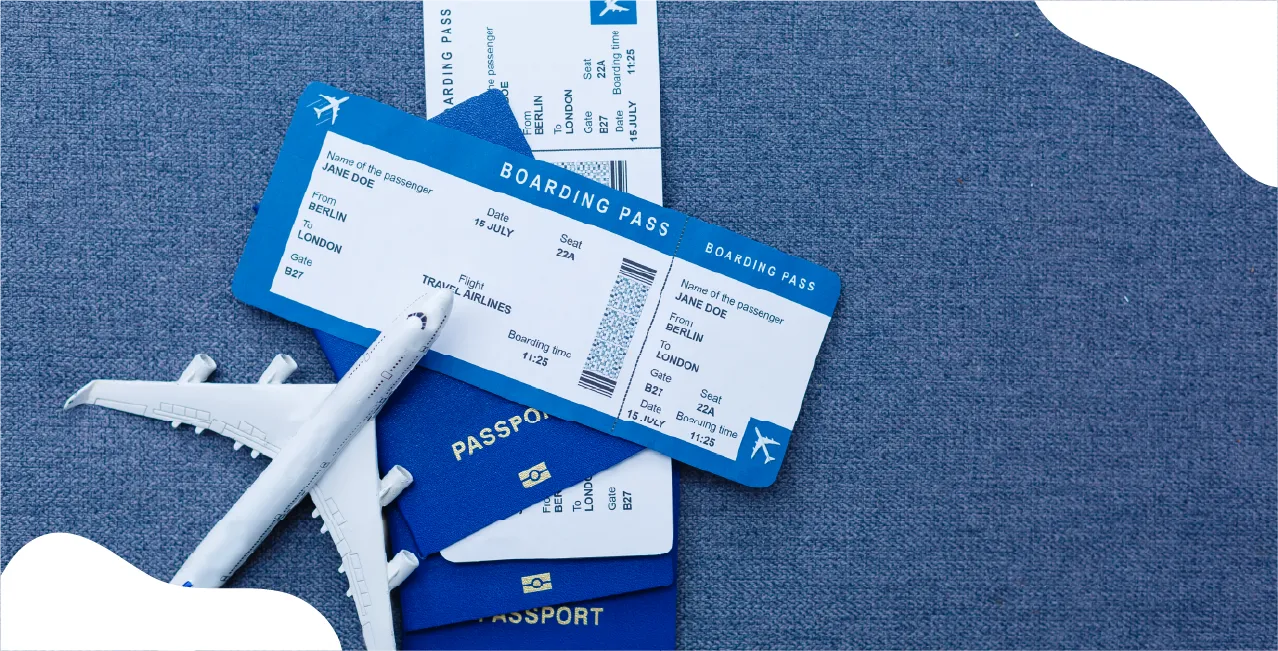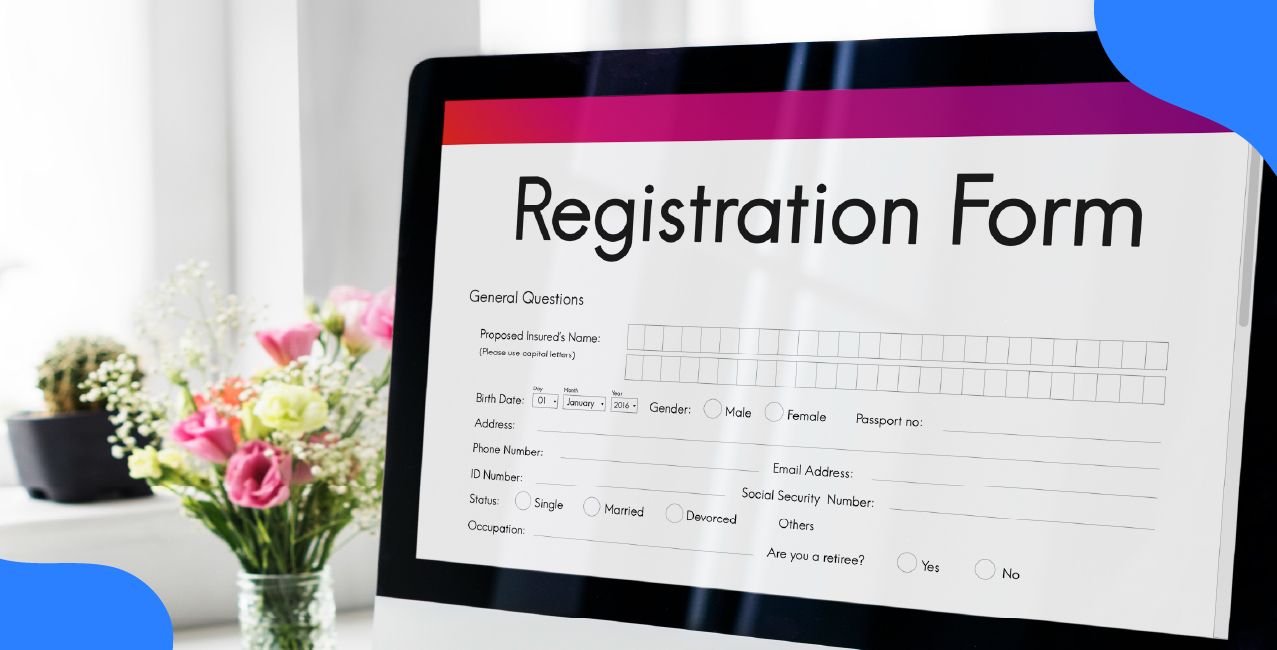
Author
LoansJagat Team
Read Time
5 Min
22 Jul 2025
GST on Air Tickets – Domestic vs International Tax Explained
For example, Riya, a digital marketer from Bengaluru, flies for work. She books an economy‑class ticket to Mumbai for ₹6,000 (base fare). GST at 5 per cent adds ₹300, making her total ₹6,300. For her return, she chooses a business‑class ticket priced at ₹10,000; GST at 12 per cent adds ₹1,200, bringing the return fare to ₹11,200.
Here’s the main benefit: Because Riya books her travel for work, she enters her company’s GST number when booking. She gets a valid GST invoice and claims ₹1,500 as input tax credit in her GST return, ₹300 for her outbound flight and ₹1,200 for the return.
It’s amazing how a little attention to detail can help you save money.
Let’s break it all down with clear examples, simple steps, and easy-to-read tables, so your next work trip is not just productive, but also tax-efficient.
What is GST on Flight Tickets?
Let’s say Arjun, a marketing executive from Delhi. He needs to attend a business meeting in Mumbai and later fly to Dubai for a conference. He checks flight prices:
Delhi to Mumbai (Domestic):
-
Economy Class ticket: ₹6,000
->GST @5% = ₹300
->Final Price = ₹6,300
-
Business Class ticket: ₹12,000
->GST @12% = ₹1,440
->Final Price = ₹13,440
-
Economy Class ticket: ₹6,000
Mumbai to Dubai (International):
-
Economy Class ticket: ₹20,000
->GST @5% = ₹1,000
->Final Price = ₹21,000
-
Business Class ticket: ₹40,000
->GST @12% = ₹4,800
->Final Price = ₹44,800
-
Economy Class ticket: ₹20,000
So, whether Arjun flies within India or abroad, GST applies based on the class he chooses.
Key Points:
-
GST is 5% for economy class and 12% for business class
-
The same rates apply for domestic and international flights
-
GST applies only to the base fare, not the fuel surcharge, airport tax, etc.
GST Rates Applicable on Air Tickets:
In India, GST on flight tickets is 5% for economy class and 12% for business class. This tax is added to both domestic and international flights. So, the type of ticket decides how much extra GST you pay.
For Example, Priya is flying from Delhi to Mumbai. She has two options:
-
Economy class ticket for ₹5,000
->GST @5% = ₹250
->Final price = ₹5,250
-
Business class ticket for ₹10,000
->GST @12% = ₹1,200
->Final price = ₹11,200
She chooses economy and saves on both fare and tax. Whether the flight is domestic or international, the same GST rates apply: 5% for economy and 12% for business class.
Key Points:
-
GST on economy: 5%
-
GST on business: 12%
-
Applies to both domestic and international flights
-
GST is charged on the base fare, not convenience fees
GST on Flight Tickets: Before vs After:
Let’s take an example of Sneha and Raj. In 2016, they planned a trip from Delhi to Bengaluru. Sneha flew economy, and Raj booked a business-class ticket.
Before GST (Pre-2017):
-
Sneha’s Economy Ticket:
Base Fare: ₹1,200
-
Add-ons: Fuel Charge ₹400, CUTE Fee ₹30, Passenger Fee ₹150, Development Fee ₹85
Service Tax @5.6% on airfare + fuel = ₹104
Final Total: ₹1,979
-
Raj’s Business Ticket:
Base Fare: ₹5,000
Add-ons: Fuel Charge ₹1,600, CUTE Fee ₹120, Passenger Fee ₹400, Development Fee ₹250
Service Tax @8.4% on airfare + fuel = ₹624.12
Final Total: ₹8,054
Now fast forward to 2025, they travel again, same route and tickets, but under the GST system.
After GST (Post-2017):
-
Sneha’s Economy Ticket:
GST @5% on (fare + fuel) = ₹93.75
Final Total: ₹1,968
-
Raj’s Business Ticket:
GST @12% = ₹891
Final Total: ₹8,321
Surprisingly, Sneha now pays less, while Raj sees a small hike. But the system is now simpler, transparent, and uniform across domestic and international travel.
Key Takeaways:
-
Pre-GST: Multiple-layered taxes, less clarity
-
Post-GST: Flat 5% (economy) and 12% (business), clear and consistent
-
Makes pricing more predictable for travellers
How to Claim Input Tax Credit (ITC) for Flight Tickets?
Claiming Input Tax Credit (ITC) on flight tickets is allowed only when the travel is related to business purposes such as client meetings, vendor visits, conferences, or official travel. Here’s how you can claim it properly:
Step 1: Enter Your Business GSTIN While Booking
When booking your flight, ensure you provide your business’s GST number (GSTIN). This helps the airline generate a GST-compliant invoice in your company’s name.
Step 2: Collect the GST Invoice After the Flight
After your trip, request a detailed GST invoice from the airline. The invoice must include:
-
Invoice number and date
-
Airline’s name and GSTIN
-
Your company’s name and GSTIN
-
Flight details (origin, destination, date)
- Total fare and GST amount
Step 3: Maintain Invoice and Itinerary Records
Keep a copy of both the GST invoice and the flight itinerary for your accounting records. These documents are essential during audits or GST reconciliation.
Step 4: File ITC in GST Returns
While filing your GST returns, input the GST amount from the invoice to claim ITC. This will help you reduce travel costs and improve tax efficiency for your business.
Conclusion:
Next time you book a work flight, whether within India or abroad, keep this in mind: GST is 5% on economy class and 12% on business class, but only on the base fare. If you're flying for business, add your company’s GST number while booking. Then get a proper GST invoice and claim Input Tax Credit (ITC). It’s that simple. You save money and make your travel more tax-friendly.
So, book smart, claim your credit, and keep your business trips cost-effective!
FAQs:
Q1: What is the GST rate on economy class air tickets?
GST is charged at 5% on the base fare of economy class flight tickets.
Q2: What is the GST rate for business-class flight tickets?
Business class tickets attract 12% GST on the base fare.
Q3: Does GST apply to both domestic and international flights?
Yes, the same GST rates apply to both domestic and international air travel.
Q4: Can I claim GST Input Tax Credit (ITC) on flight tickets?
Yes, ITC can be claimed if the flight is for business purposes and a valid GST invoice is collected.
Q5: Is GST charged on the total ticket cost, including fees?
No, GST is only charged on the base fare, not on convenience or other additional fees.
Other Important GST Pages | ||||
About the Author

LoansJagat Team
‘Simplify Finance for Everyone.’ This is the common goal of our team, as we try to explain any topic with relatable examples. From personal to business finance, managing EMIs to becoming debt-free, we do extensive research on each and every parameter, so you don’t have to. Scroll up and have a look at what 15+ years of experience in the BFSI sector looks like.

Quick Apply Loan
Subscribe Now


